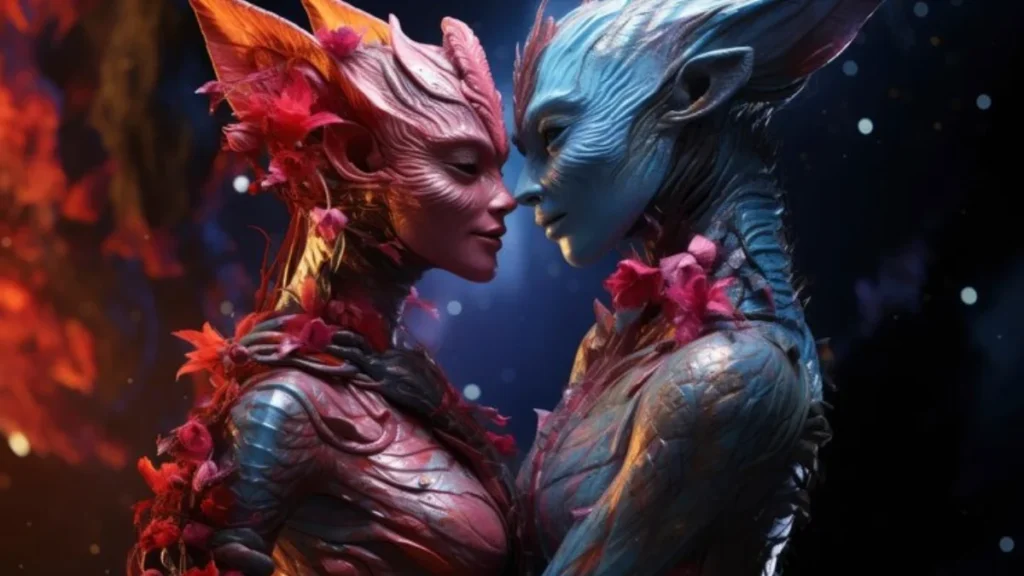Introduction to imagesize:2160×3840 melisandre
The world of digital fandom has transformed the way we engage with our favorite characters, and few figures embody this phenomenon quite like Melisandre from “Game of Thrones.” With her striking red robes, enigmatic aura, and powerful abilities, Melisandre captures the imagination. But what happens when fans take their passion beyond mere appreciation? Enter imagesize:2160×3840 melisandre—a keyword that not only represents stunning visuals but also reflects a rich tapestry of creativity woven by dedicated fans. This blog post dives into the depths of Melisandre’s popularity on social media and explores how fan contributions have shaped her character arc in unexpected ways. From captivating cosplay to breathtaking fan art, join us as we unravel the intricate relationship between Melisandre and her devoted followers.
What is imagesize:2160×3840 melisandre?
Imagesize:2160×3840 melisandre refers to a specific resolution often associated with striking visuals of the character Melisandre from “Game of Thrones.” This image size captures intricate details, allowing fans to appreciate her haunting beauty and powerful presence.
Melisandre, portrayed by Carice van Houten, is a complex figure. Her rich red garments contrast vividly against darker backdrops in high-resolution images. The clarity showcases her enigmatic expressions and mystical aura, compelling viewers.
In digital fandoms, such resolutions enhance the experience. They allow fans to create captivating wallpapers or share stunning edits across social media platforms. Fans are drawn not just to her storyline but also to the artistry that comes from these vivid representations.
Such high-quality images play an essential role in building community among enthusiasts who celebrate their favorite characters through visual art and discussion.
The Rise of Melisandre’s Popularity on Social Media
Melisandre, the enigmatic Red Woman from “Game of Thrones,” has captured hearts and minds across social media platforms. Her character’s depth and complexity make her a perfect subject for discussion and debate among fans.
Platforms like Instagram and Twitter have seen a surge in Melisandre-themed content. From stunning visuals to poignant quotes, fans are eager to share their interpretations. This digital engagement creates a vibrant community centered around her mystique.
Moreover, hashtags related to Melisandre often trend during significant events or episodes featuring her prominently. Fans dissect her motivations, analyze pivotal scenes, and celebrate her role in the series’ larger narrative arc.
Memes featuring Melisandre pop up regularly as well, showcasing both admiration and humor. The fusion of elements like cosplay photos adds another layer to this online phenomenon; it’s not just about watching—it’s about actively participating in her story through creativity.
How Fans Have Shaped Melisandre’s Character Arc?
Fans have played a crucial role in shaping Melisandre’s character arc throughout the series. Their interpretations and discussions breathe life into her complex personality.
As viewers delved deeper into her motives, they unearthed layers of nuance that even some writers may not have fully explored. Theories posted online sparked debates about her intentions and morality, inviting others to rethink their initial perceptions.
Social media platforms became hotbeds for fan theories, revealing how strongly people connected with Melisandre’s journey. As audiences rallied behind or against her actions, creators took notice.
This mutual relationship between fans and showrunners created a dynamic feedback loop. Fans’ passionate responses influenced narrative shifts that allowed for growth in Melisandre’s character beyond mere plot devices. Through this engagement, she transformed from an enigmatic figure to one who evokes empathy and intrigue among many viewers.
The Role of Cosplay in Fandom and its Impact on Melisandre
Cosplay plays a vital role in the fan community surrounding Melisandre. It allows fans to embody their favorite character, bringing her mysterious essence to life.
Through intricate costumes and detailed makeup, cosplayers showcase their creativity and passion. Each rendition of Melisandre reflects individual interpretations while honoring the source material.
These passionate portrayals often inspire online engagement. Photos flood social media platforms, sparking discussions about character nuances and motivations. Fans share tips on crafting the perfect look or replicating iconic scenes.
Moreover, cosplay fosters connections among enthusiasts. Conventions become vibrant hubs where fans unite over shared admiration for Melisandre’s complexities.
The presence of cosplayers also influences how creators perceive characters within the story. Positive responses can lead writers to explore deeper facets of Melisandre’s personality or storyline trajectory based on fandom enthusiasm.
The Influence of Fan Art and Edits on Melisandre’s Representation
Fan art has become a powerful medium in shaping the portrayal of Melisandre. Artists bring their interpretations to life, infusing her character with fresh perspectives. These creations often highlight her complexities, showcasing both her allure and darkness.
Digital edits further amplify this influence. They can transform scenes to emphasize specific moments or emotions tied to Melisandre. Fans remix images and create stunning visuals that resonate deeply within the community.
Through these artistic expressions, fans challenge traditional representations of characters. This allows for a more nuanced understanding of Melisandre’s role in “Game of Thrones.” It encourages discussions about morality, power, and sacrifice.
In many ways, fan art acts as a dialogue between creators and viewers. Each piece reflects not just admiration for Melisandre but also the broader themes she embodies within the series.
Analyzing the Relationship Between Fans and Show Creators in Shaping Melisandre’s Storyline
The relationship between fans and show creators can be a powerful force, particularly in the case of Melisandre. As audiences engaged with her character on multiple levels, their reactions often influenced narrative decisions.
Fans dissected her motivations and questioned her morality. This dialogue helped shape how showrunners approached Melisandre’s arc over time. Show creators took notice of this engagement, adapting storylines to either amplify or mitigate fan concerns.
Social media became a melting pot for discussions about her fate. Fans crafted passionate arguments that permeated forums and Twitter threads alike. These conversations didn’t go unnoticed; they echoed back into the writing room.
This interplay fostered a unique dynamic where viewer feedback could sway creative choices, enriching Melisandre’s journey in unexpected ways. The blending of audience insights with storytelling opened new avenues for character development and plot twists that resonated broadly across fandoms.
Conclusion
The journey of Melisandre as a character has been significantly shaped by the dynamic interplay between fandom and digital platforms. Her striking presence in imagesize:2160×3840 format highlights not just her visual allure but also the deep connection fans feel towards her. Social media has amplified this bond, allowing fans to engage with each other and share their interpretations.
As cosplay continues to flourish, it brings Melisandre to life in new ways and fosters community spirit among enthusiasts. The creativity displayed in fan art further enriches her narrative, showcasing how diverse perspectives can alter our understanding of a character’s essence.
Moreover, the relationship between fans and creators remains pivotal. Each tweet or post shared by showrunners seems more impactful when fans respond with enthusiasm or critique. This continuous dialogue shapes not only Melisandre’s storyline but also enhances the entire viewing experience for audiences worldwide.
It’s clear that within the realm of digital fandom lies an extraordinary power that allows characters like Melisandre to transcend the screen, evolving through collective imagination and engagement.
ALSO READ: AutoCarTrends.com: Your Guide to Auto Insights
FAQs
What is “imagesize:2160×3840 melisandre”?
“Imagesize:2160×3840 melisandre” refers to high-resolution visual content featuring Melisandre from Game of Thrones. This specific image size—2160×3840 pixels—captures rich detail, allowing fans to appreciate her mysterious aura and symbolic styling. These images are popular in digital fandoms for use in wallpapers, edits, and social media posts due to their clarity and cinematic quality.
Why is Melisandre such a prominent figure in digital fandoms?
Melisandre’s layered personality, visual mystique, and controversial role in Game of Thrones make her a fan favorite for digital interpretation. Fans connect with her enigmatic presence and use social media to analyze her story arc, create fan content, and express admiration or critique, all of which keeps her character actively discussed and evolving within online communities.
How does cosplay contribute to Melisandre’s popularity?
Cosplay allows fans to physically embody Melisandre’s essence through costumes and makeup. These portrayals bring her character to life at fan conventions and across social media. The creative effort involved in recreating her look builds deeper engagement, inspires others to participate, and strengthens her presence within fandom spaces.
In what ways has fan art influenced Melisandre’s portrayal?
Fan art gives Melisandre new dimensions beyond what’s shown on screen. Artists reimagine her appearance, emphasize specific emotions, or explore alternate storylines. These creative works expand how viewers perceive her, often shifting public interpretation or sparking meaningful dialogue about her intentions and impact.
How have fans influenced Melisandre’s character development in the series?
Fan discussions, theories, and reactions have impacted how Melisandre’s role evolved over time. Showrunners often tune into online discourse to gauge audience sentiment. As a result, key story decisions may reflect fan interest or concern, demonstrating how engaged viewership can influence narrative direction in real time.






